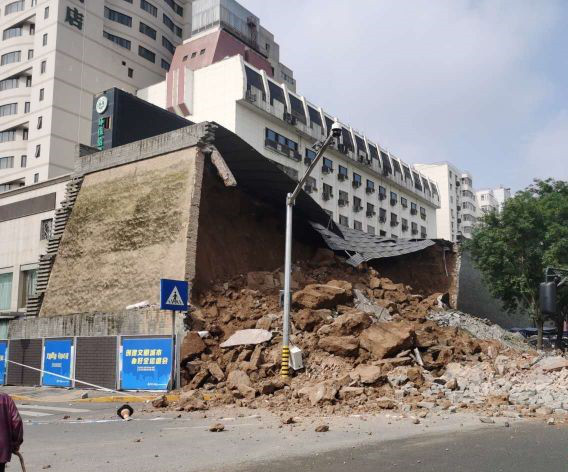The city wall fell down just like that, and it was also on hot searches? Citizen: Few people see it and it is strange. It's scary to have no culture
Recently, a news story about the collapse of Xi'an City Wall attracted the attention of many netizens. In the video taken by passers-by, a section of the city wall about 20 meters long collapsed in a few seconds. In an instant, dust and shocking, and normal vehicles and pedestrians on the road also fled in all directions. The collapsed city wall is part of the ruins of the Qin Mansion in the Ming Dynasty. The Qin Mansion is the residence of Zhu Yuan. You may only find Zhu Yuan familiar, but you may suddenly realize that he is the son of Zhu Yuanzhang and the king of the Ming Dynasty, who ranks first among the vassal kings. The collapsed city wall was only an outer wall added to protect the ruins. The remaining soil core of the palace wall did not collapse. Therefore, to say that this city wall is not the other city wall, a well-informed friend from Xi'an citizens said: The city wall is just falling down, and it's scary to see and have no culture!

After more than 600 years of ups and downs, the original city wall has long been dilapidated and dilapidated. And in 1921, Feng Yuxiang extensively demolished the walls in order to build the Governor's Mansion in Xi'an. What really remains is the exposed rammed earth. Without any protection from the rammed earth, it may collapse after long-term exposure to wind, sun, and heavy rain. However, in order to protect these precious historical relics, Xi'an City successively repaired the damaged city walls after 2003. The main method was to repair them with bricks on the outside of the exposed soil. Similar treatment was also done to the collapsed wall. On the outside of the original rammed earth, it was built with bricks and filled with soil. The original exposed rammed earth was wrapped inside the wall.

Experts rushed to the scene for investigation and determined that the cause of the collapse was caused by recent rainfall. Rainwater enters the interior of the city wall through gaps in the bricks. Since there are no drainage channels inside the city wall, rainwater can only slowly seep out through the gaps in the bricks. The recent continuous heavy rainfall has made the city wall in jeopardy. The city wall was squeezed and deformed under the pressure of the rain, causing the wall to collapse.

The collapse of the city wall of the Qin Wangfu site is regrettable, but when you look closely at the protection of the Xi'an city wall, you do your best. There are settlement observation points, and damage areas are often repaired. Is this differential treatment because one is a 5A scenic spot and the other is just a ruins? The most thought-provoking thing is that opposite this section of the city wall is the Provincial Government Building. Fortunately, no one died in this collapse. Unfortunately, there were injuries and property losses. However, what makes us even more sad is that cultural relics may slowly disappear and gradually disappear through our negligence. People can't help but wonder why the restoration work that has only been 17 years ago is so fragile. Objectively speaking, continuous rainfall will indeed cause considerable damage to the city wall.

However, water seepage in the city wall was discovered in 2019, and relative measures were formulated. Why did the tragedy of large-scale collapse of the city wall still occur even when preparations were made? It is not easy for the city wall to stand tall after 600 years of vicissitudes. As the ancient capital of the thirteen dynasties, Xi'an has too many cultural relics and too many sites to be developed urgently. Moving a little slower in this process may make future generations regretful.
Previous Article:The Fandai chaos grass in these places in Xi'an is as bright as haze, taking you to lead the circle of friends in minutes
Next Article:A day's kayaking trip at Gaoguan Waterfall in Xi'an
